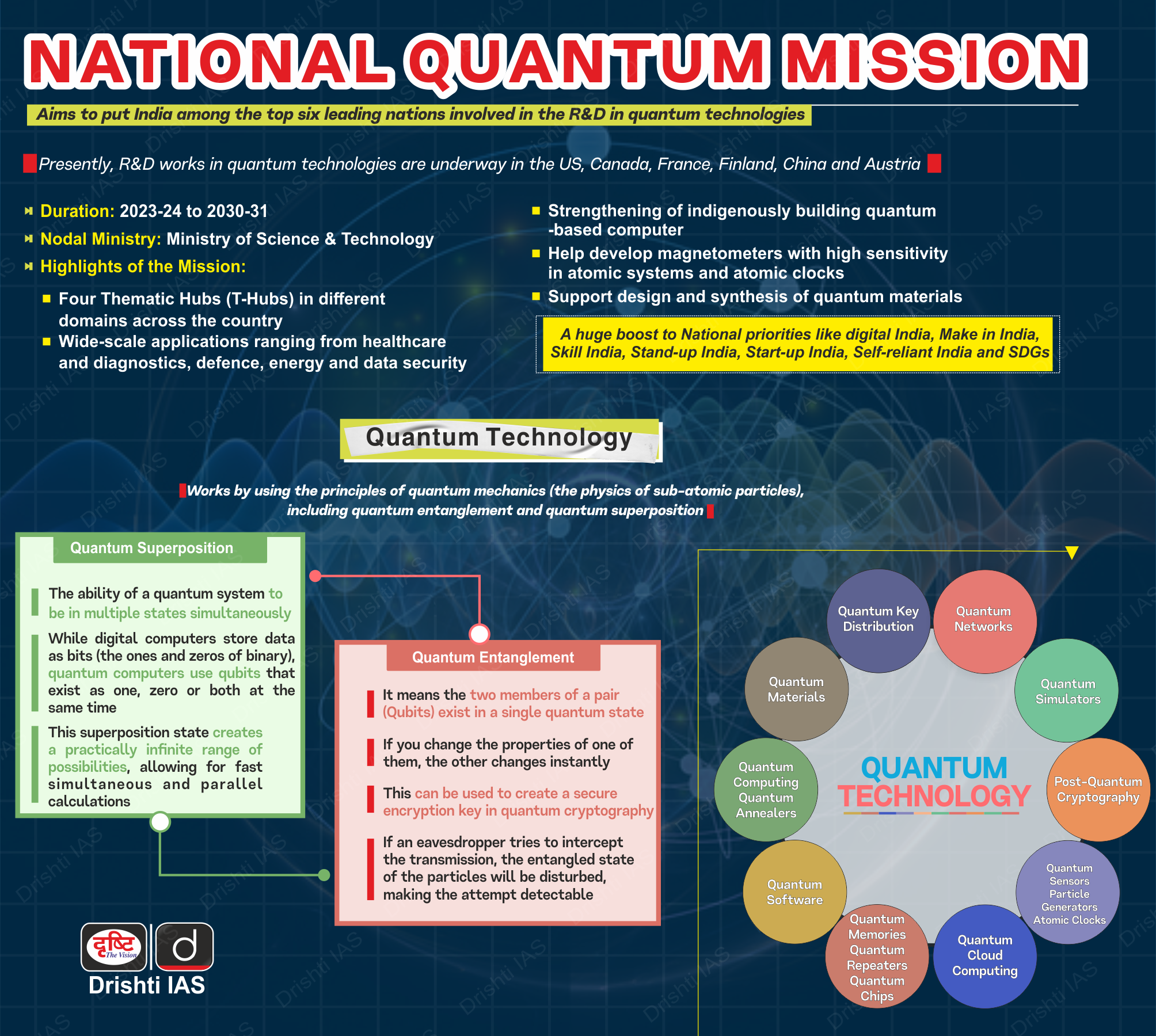Centenary of Bose-Einstein Statistics | 25 Nov 2024
Why in News?
Recently, the centenary of 'Bose-Einstein' statistics was celebrated, honouring Satyendra Nath Bose's groundbreaking work on particle indistinguishability.
- His contributions laid the foundation for key advancements in quantum mechanics, including the Bose-Einstein Condensate, and continue to shape modern physics.
Who was Satyendra Nath Bose?
- Early Life: Born on 1st January 1894, in Calcutta (now Kolkata), Bose was a promising student, excelling in mathematics from an early age.
- He was inspired by Jagadish Chandra Bose, a pioneer in radio wave research, SN Bose ventured into the realm of quantum mechanics, which led to his groundbreaking contributions to the field.
- Bose’s Contribution:
- Bose-Einstein Statistics: In 1924, Bose published a paper, "Planck's Law and the Hypothesis of Light Quanta," where he introduced a new way of counting particles, particularly photons, as indistinguishable entities.
- Albert Einstein recognized the significance of Bose's paper and expanded on his ideas, leading to the development of Bose-Einstein statistics and the discovery of Bose-Einstein condensates.
- Bose-Einstein statistics challenged the classical mechanics' assumption that particles are distinguishable, where each particle is considered unique and can be tracked individually.
- Bose-Einstein Statistics distinguishes between two classes of particles in quantum mechanics: bosons and fermions.
- Bosons, named after Bose, can occupy the same quantum state, making them indistinguishable. This means one boson cannot be distinguished from another.
- This property enables phenomena like superconductivity and superfluidity.
- Fermions, in contrast, obey the Pauli exclusion principle (no two electrons can have the same four electronic quantum numbers), which governs the structure of matter.
- Bosons, named after Bose, can occupy the same quantum state, making them indistinguishable. This means one boson cannot be distinguished from another.
- Bose-Einstein Condensate (BEC): Bose’s work, expanded by Einstein, led to the prediction of BEC, a unique state of matter, formed when bosonic atoms are cooled to near absolute zero (- 273.15° C), causing them to merge into a single quantum entity with wave-like properties.
- The concept remained theoretical until it was experimentally confirmed in 1995 by Eric Cornell and Carl Wieman, who received the Nobel Prize for their work in 2001.
- Bose-Einstein Statistics: In 1924, Bose published a paper, "Planck's Law and the Hypothesis of Light Quanta," where he introduced a new way of counting particles, particularly photons, as indistinguishable entities.
- Relevance in Modern Physics: Discoveries such as the Higgs boson and advancements in quantum computing highlight the enduring relevance of Bose's principles. Bose-Einstein statistics impact not only physics but also cosmology and condensed matter science.
- Awards and Honours: Satyendra Nath Bose, widely known as the Father of the God Particle, received the Padma Vibhushan in 1954. In 1959, he was named India's National Professor, the highest honour for a scholar, a position he held for 15 years.
UPSC Civil Services Examination Previous Year Question (PYQ)
Prelims
Q. Which one of the following is the context in which the term "qubit" is mentioned?
(a) Cloud Services
(b) Quantum Computing
(c) Visible Light Communication Technologies
(d) Wireless Communication Technologies
Ans: (b)
Exp:
- Quantum Supremacy
- Quantum computers compute in ‘qubits’ (or quantum bits). They exploit the properties of quantum mechanics, the science that governs how matter behaves on the atomic scale.
- Hence, option (b) is correct.

